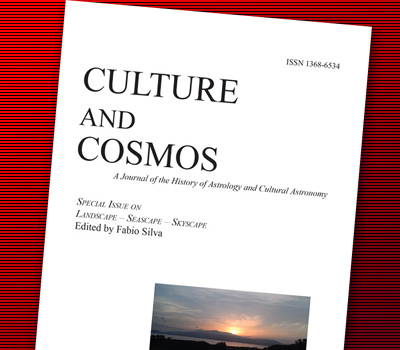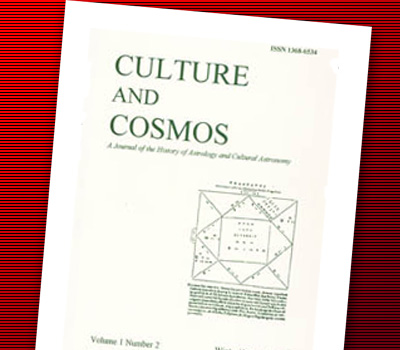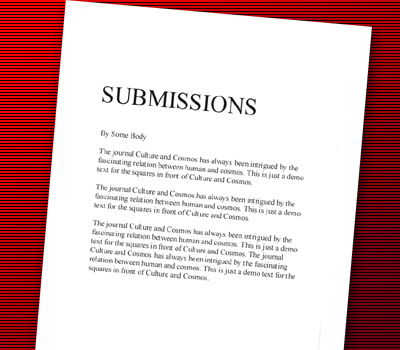We are currently seeking submissions for future volumes of Culture and Cosmos.
Volume 14
Introduction
Dorian Gieseler Greenbaum
Johannes Kepler (1571-1630) was a scientist on the cusp of the modern era. His passion was to explore the nature of the physical universe using the most advanced science of his day, yet his grounding in the classical tradition meant that he combined the heliocentric proposals of Copernicus with the geometry of Plato. He retained a mystical sensibility even as he formulated mathematical models of the solar system. Similarly, his astrological writings reflect both hard-headed materialist science and a poetic perceptiveness. His practice of astrology was both traditional and innovative. As we shall see in the works excerpted in this volume, Kepler wanted to reform the theoretical basis of astrology, but he still used traditional methods in his own practice of it. Among the 900-1000 or so extant charts (for 800 individuals) now published in the Gesammelte Werke [1] we find many charts cast for Kepler’s family, relatives and friends. With some friends (e.g. Michael Mästlin and David Fabricius), he carried on long correspondences which at times included astrological speculation and interpretation. As the Imperial Mathematician (whose duties included astrological services) for the emperor Rudolf II, Kepler was keenly aware of the politics involved in practising state astrology.
This volume of Culture and Cosmos contains only a sampling of Kepler’s astrological oeuvre, yet the depth and breadth of these writings show that we must again lay to rest the popular but unfounded claim that Kepler only practised astrology for the money.[2] Among the newly-published astrologica are charts cast for Kepler’s two wives, many of his children, his parents, grandparents (see the cover of this issue), siblings, aunts and uncles. Included are twenty-four of Kepler’s Solar Revolutions (in modern terminology, Solar Returns). Kepler compared the charts of himself, his wife, his step-daughter and his newborn son. He gave astrological advice to his teacher, Michael Mästlin, as well as to his friend David Fabricius. Such a wealth of personal practice belies the allegation that Kepler had no confidence in the validity of astrology. To the contrary, it shows that although Kepler was deeply dissatisfied with the way some astrology was practised, he strove to improve the predictive capability of astrology in his own work. In addition, he tried to strengthen the theoretical underpinnings of astrology with both mathematical and philosophical models. Some of the letters excerpted here contain examples of this theoretical work.
We begin this volume with Friederike Boockmann’s essay on Kepler’s ‘Horoscope Collection’, taken from Miscellanea Kepleriana. Festschrift für Volker Bialas zum 65. Geburtstag, here updated from Boockmann’s original article and translated by Patrick J. Boner. Her essay provides an overview of the scope of Kepler’s astrological work. The rest of the volume translates into English an assortment of Kepler’s astrological writings, from his work as a practising astrologer, to the astrological content in his book De stella nova, to his writing on astrological theory.
We may note that in the official publication date of this volume (2010), we are celebrating the 400th anniversary of the publication of Tertius Interveniens, Kepler’s defence of astrology and one of his efforts to improve its philosophical foundations. It is hoped that this present-day sampling of his astrological writing will further those aims.
Translating Kepler
For his astrological work, Kepler wrote primarily in Latin, with a fairly large subset of treatises in German (the most famous being, possibly, his Tertius Interveniens). Some of the works translated here also contain substantial portions originally in German. The texts fall into three categories: 1) those likely never meant for publication, such as Kepler’s astrological analysis of his own family, and his treatise on directions; 2) private letters; and 3) excerpts from published material, for example some weather predictions and chapters of De stella nova. We note at the beginning of each translated section the language(s) in which it was written. We also note the volumes and page numbers of the two critical editions, the Opera Omnia and the Gesammelte Werke, which contain the translated material. The translators for this issue of Culture and Cosmos are:
Patrick J. Boner
Dorian Gieseler Greenbaum
J. Cornelia Linde
John Meeks
From my own perspective as one of Kepler’s translators, I cannot help sharing Anthony Grafton’s apt comment on readers of Kepler’s Latin: ‘...those who have enjoyed a bracing dip in the chill waters of Kepler’s Latin syntax.’[3] It is true that Kepler’s is not the easiest Latin to read or, indeed, to translate. In the course of editing this volume, as well as working on and annotating the translations, I have been frustrated and exasperated by Kepler’s prose but also, in the end, forgiving of it. In spite of the difficulty of his style, that style also reveals who he is. His personality shines through his Latin. I hope the readers of this volume will see that as well.
Acknowledgements
This volume of Kepler’s astrological writings has been a long time in the making, and thanks are due to the many people who made this issue possible. First, to Nicholas Campion, the general editor of Culture and Cosmos, and Nicholas Kollerstrom: the first steps toward this publication were taken by them in 2005. I began to work on annotations to the first drafts of some translations in 2006. Along the way translations by Patrick Boner and John Meeks were incorporated. Patrick Boner also kindly offered to translate Friederike Boockmann’s essay on the Kepler Astrological Collection into English. Cornelia Linde has been invaluable as my co-translator on fourteen translations. With the long-awaited publication in late 2009 of Kepler’s Astrologica by the Kepler Commission, in volume 21, 2.2 of the Gesammelte Werke, a decision was made to add even more translations to the present volume. So in addition to those mentioned above, I also thank the editors of the Astrologica, Friederike Boockmann and Daniel A. Di Liscia. The Kepler Archive in St Petersburg gave us permission to publish a number of charts written in Kepler’s own hand, for which I am grateful; I also thank Karine Dilanyan for her work in helping us obtain scans and publishing rights from the Archives, and Peter Nockolds for transcriptions. In addition I thank those who contributed help on the translations and/or on understanding Kepler’s astrology: Anna Akasoy, Bernadette Brady, Charles Burnett, Geoffrey Cornelius, Joseph Crane, Dirk Grupe, Robert Hand, Nadine Harris, Stephan Heilen, Deborah Houlding and Ulrike Kern. Finally, I thank my fellow translators Cornelia Linde, Patrick Boner and John Meeks. As the general editor of this issue of Culture and Cosmos, I owe all these individuals a debt of gratitude for their help and expertise in preparing this issue.
University of Wales Trinity Saint David
November 2011
[1] Volume 21, 2.2 (Munich, 2009).
[2] These are too pervasive and numerous to cite in their entirety, but, see, e.g., see Dr David Whitehouse, ‘Medieval Astronomer’s Horoscope Discovered’, Sci-Tech section, BBC News online, 3 March 1999, at http://news.bbc.co.uk/1/hi/sci/tech/289730.stm, who quotes Edward S. Holden (first director of the Lick Observatory, in 1896), ‘But nothing is more suitable to recall the personality of Kepler than this piece of astrology, by means of which he kept the wolf from the door, and purchased the strength and leisure for higher things’; also, Chet Raymo in The Boston Globe, 26 July 1799, p. C2, in reference to the same discovery: ‘Kepler practiced astrology only as a matter of financial necessity. His heart certainly wasn't in it’; and, more recently, John Gribbin, in a review of Kepler’s Witch in The Washington Post, 27 June 2004, p. BW09: ‘Actually, the impoverished Kepler cast horoscopes only to make money...’. While especially in the last fifteen years, historians of astrology have taken pains to provide more nuanced views of Kepler’s practice of astrology, the more sensational, yet false, claims are still popular.
[3] Anthony Grafton, 'Kepler as a Reader', Journal of the History of Ideas (1992), vol. 53, pp. 561-72, here p. 564.









